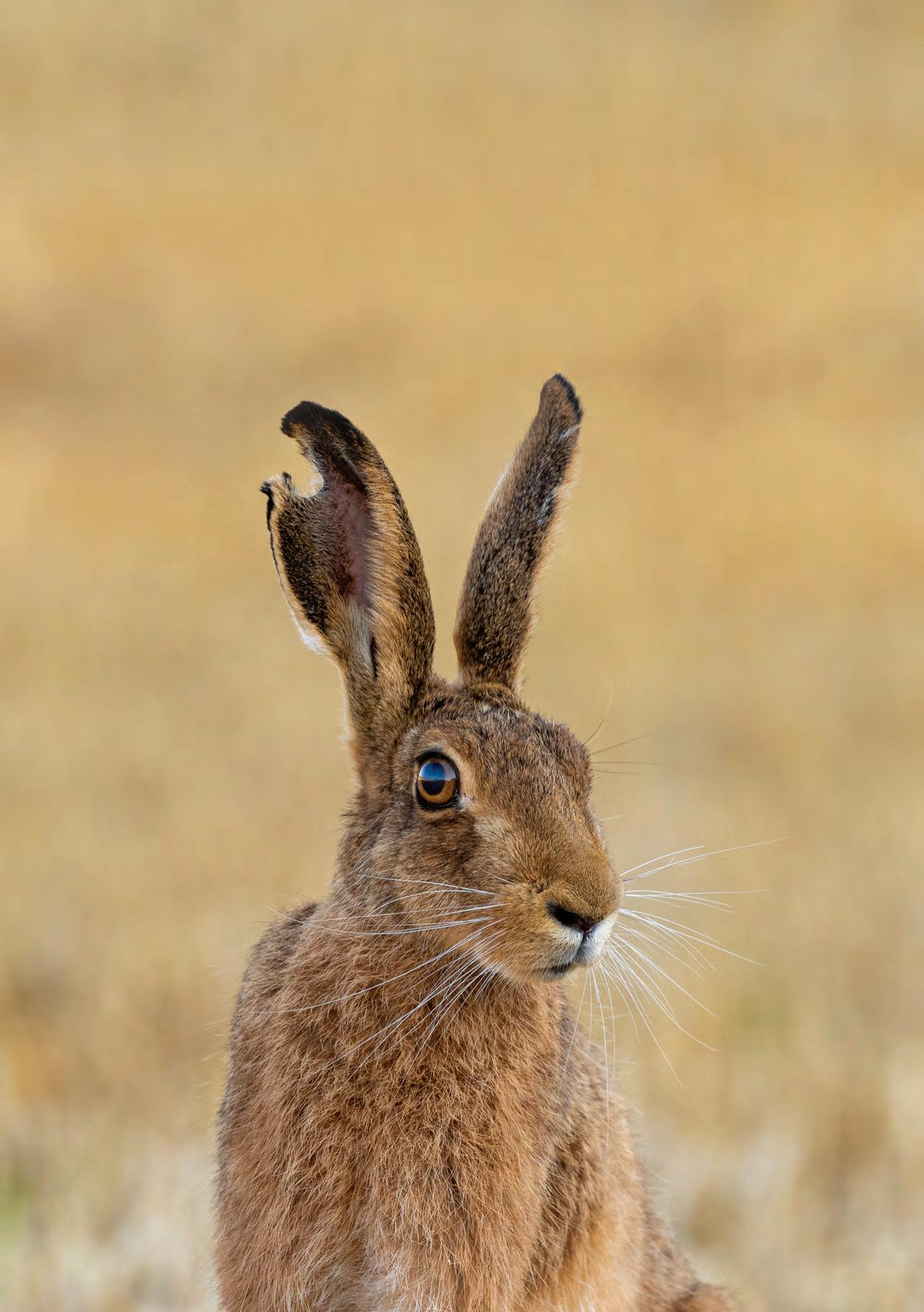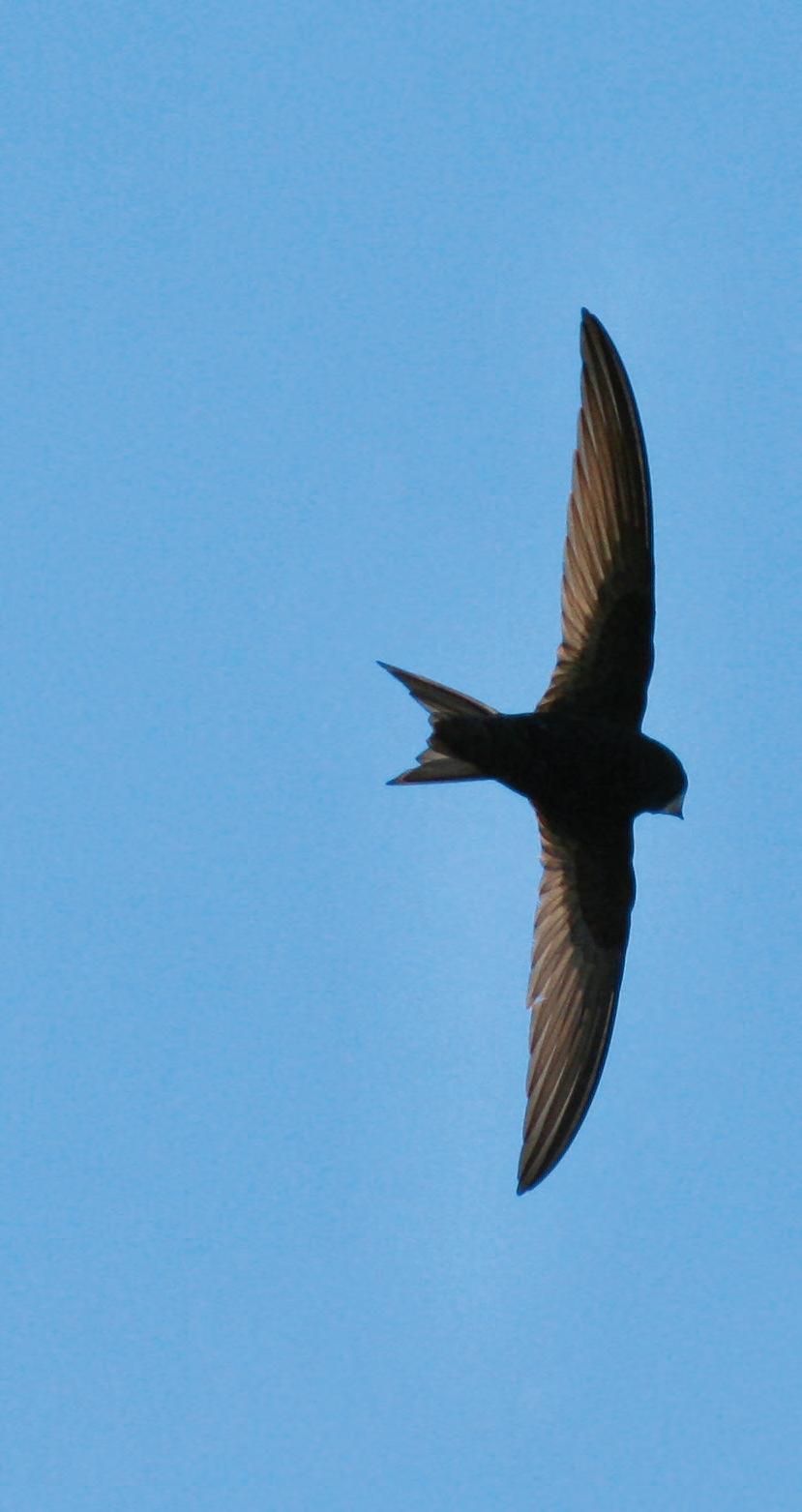Flying High O
ur skies will see the first swifts returning during the first week of May. While they only stay with us until August, these beautiful migratory birds are unfortunately making the headlines for all the wrong reasons. Jenny James of Woodbridge Swifts explains: “We’re faced with a national trend of declining numbers. We lost a further 32% of our swifts in the seven years from 2009 to 2016, with their numbers falling from 87,000 pairs to 59,000 pairs.
“Swifts pair for life, usually producing a single brood of two of three chicks each year” EDDIE BATHGATE, SOS SWIfTS
year and, if they survive their first year, can live to almost 20 years.” Things we can do to help these most entertaining of summer visitors include: l Put up a nest box or several nest boxes. l Use a CD player or Bluetooth speaker to play their calls out of the nearest window. Or buy a readymade swift call system with a speaker attached to the nest box. l Create groups of nest boxes around existing boxes and nesting sites so that a colony starts to build up. Sadly, there are other problems for swifts. Eddie continues: “Insect numbers are generally in decline. In parts of East Anglia, with intense arable farming and use of herbicides and pesticides, there is less aerial plankton on which the swifts feed, so there’s fewer gnats, midges, small spiders and aphids, making these migratory birds more reliant on other, less nutritious insects such as hoverflies and lacewings to feed their young.” Jenny adds: “Here in coastal Suffolk, we are lucky to have the estuaries of the Deben and the Alde, where there is more pasture and areas of uncultivated ground for insects to flourish. “Like other migratory birds, swifts fly over many countries and climates. They need to synchronise their journeys with the seasonal cycles in southern Europe, the Mediterranean, and north, west and southern Africa. Climate change and human pressures are changing the environment in their winter homelands in ways we cannot predict and over which we have no control.” The Suffolk Bird Group has set up a special project team: SOS Swifts. Working with Woodbridge Swifts, it is helping to raise awareness of the importance of encouraging these beautiful birds to return each summer..
Picture by Chris Courtney
l Details of nest boxes and swift call sound systems can be found at: www.rspb.org.uk/groups/woodbridge l SOS Swifts can advise on all aspects of finding, monitoring and creating swift nest sites. Also pass on details of any nesting birds you observe via woodbridge.swifts@gmail.com or Swifts@SuffolkBirdGroup.org l Woodbridge Swift Pint Walks. On Thursday, 2nd July and Saturday, 4th July, there’s an opportunity to walk around Woodbridge observing swifts in flight and entering their nest sites. Meeting at 7pm on Market Hill, there will also be an opportunity to compare notes in the pub afterwards. ISSUE ONE… SUMMER 2016
35
Main picture by Pawel Kuzniar
“This means that we need to make a huge effort to conserve the swift nest sites across our region and to provide nest boxes to expand existing colonies.” Eddie Bathgate from SOS Swifts, which is part of the Suffolk Bird Group, says: “With their daring flying antics and lowlevel acrobatics, swifts feed, sleep and can even mate on the wing. Landing to fashion a minimal nest cup and breed, the adults taking turns to brood and feed their young. “Research has shown that breeding adults are extremely faithful to their nest sites, returning to them in early May, and juveniles are believed to follow the adult birds back to where they fledged, identifying their own site in year three prior to nesting in year four. It is in year three that available nest sites, coupled with the attraction of swift calls, can be decisive. The birds are curious and will investigate possible sites, while screaming around in tight flocks at low level. Swifts pair for life, usually producing a single brood of two or three chicks each
As swifts return to our gardens in May, we need to take special care of these long distance visitors





